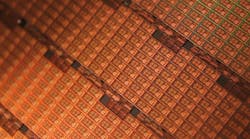This file type includes high resolution graphics and schematics when applicable.
The term “Internet of Things” (IoT) has been bandied about for some time now, and the range of “smart” applications that fall into this sprawling category is broad and growing. They include health and biosciences, buildings and industrial, retail, security, IT, and networks, not to mention home and consumer. From our smart phones alone, we can start our cars, set our DVRs, control our thermostats and appliances, check our heart rate and running pace, monitor our sleep patterns, pull down family photos from the cloud… the list goes on and on.
Related Articles
- Consumer-Focused MEMS Embarks On The Internet Of Things
- Wireless Sensor Networks Will Drive The Internet Of Things
- The Internet Of Things Hits The Road
In the automotive space, according to a study from New York-based management consulting service Oliver Wyman, half of all new vehicles will be Internet-ready by 2016. Within 15 to 20 years, this will be true of virtually all vehicles available in Japan, North America, and Western Europe. Connected cars will communicate with manufacturers for maintenance and software updates, while data gathered on our driving habits and use of in-car systems will help carmakers adapt new models to meet changing needs.
Regardless of the application, the central concept is the same: connected devices utilizing the Internet to enable instantaneous, user-controlled communication. This brave new world of communication between things relies not only on a mix of new and existing technologies, but also on connectedness and collaboration between players in an electronics ecosystem that is more pervasive and important than ever before. Why? Sheer volume and economies of scale.
Cisco Systems has put forth the widely cited industry vision that by 2020, the number of “things” connected to the Internet will reach 50 billion. Moreover, a study conducted by General Electric indicates that the IoT is expected to add more than $10 trillion to the global economy over the next two decades.
Semiconductors are key to turning this vision into a reality, from processors and microcontrollers to cellular/wireless chips and the sensors and actuators that enable objects to adapt seamlessly to their environment. But the IoT is a new kind of challenge for the semiconductor industry, requiring an unprecedented combination of high performance and high volume.
Bringing The IoT To Life
If the industry is to succeed in churning out “billions and trillions of IoT chips,” as market analyst firm the Linley Group puts it, ensuring rapid development and production of chips for IoT applications will be critical.
Given the ballooning costs of building chip factories, the foundry business has grown in market share and importance in recent years. This has enticed some large integrated device manufacturers (IDMs) to allot excess capacity to foundry services. While it holds some appeal, this approach also poses significant challenges, such as adapting processes optimized for the chipmaker’s own products to meet fabless companies’ complex design and production requirements; incorporating enough flexibility into the manufacturing line to accommodate clients’ product mixes; or simply quelling competitive concerns.
Another approach gaining momentum is an industry-wide ecosystem to accelerate collaboration and innovation among EDA, intellectual property (IP), and services providers, while enabling each of the participants to continue inventing new ways to build on their respective core competencies. Established in 2008, TSMC’s Open Innovation Platform (OIP) was the industry’s first such initiative.
OIP provides the framework of a design ecosystem that unites the efforts of many different companies within the semiconductor and related industries, offering a more flexible and viable alternative to the model put forth by traditional, vertically integrated chip companies. As technology becomes more complex and more connected, OIP lets semiconductor designers leverage a powerful partnership utilizing their own strong core capabilities. Each link within the OIP design ecosystem plays an important role in bringing the new chips to market.
Implementing the IoT requires a comprehensive process technology platform. IoT processors and microcontrollers developed within a comprehensive ecosystem can leverage both mainstream and advanced process technologies—including 0.18 µm, 0.13 µm, 90 nm, and 65 nm—as well as advanced processes at 40 nm and below. Sensors and power-management chips, on the other hand, rely on a host of process variants whose integration can be greatly simplified via an ecosystem. Some examples include CMOS image sensor (CIS), bipolar-CMOS-DMOS (BCD), embedded flash, high-voltage CMOS (HVCMOS)-Analog, HVCMOS-Driver, ultra-high voltage (UHV), and microelectromechanical systems (MEMS).
Today, devices benefiting from ecosystem innovation and collaboration include smart power circuits, such as voltage regulators; smart LED controllers; fast battery chargers; smart sensors and actuators (e.g., three-axis accelerometers, pressure sensors, bio sensors, pico projectors, inkjet print heads, camera auto focus, and touch control); and low-power wireless circuits such as Bluetooth 4.0, Wi-Fi, radio-frequency identification (RFID), and ZigBee. The possibilities for innovative new devices are limited only by imagination and the availability of a quick path to cost-effective manufacture.
Cooperation between design ecosystem partners will become even more critical as the pace of product evolution and introduction speeds up. Mobile systems-on-chip (SoCs), for example, have only about a year of shelf life. This means that IoT systems designers and integrators need more than just ICs. They need reliable roadmaps that ensure continued technology advancement and manufacturability. An ecosystem of highly skilled and collaborative partners to drive innovation, while recognizing and appreciating the needs of the market and desires of end users, is one way to help ensure all the players stay on the leading edge.


